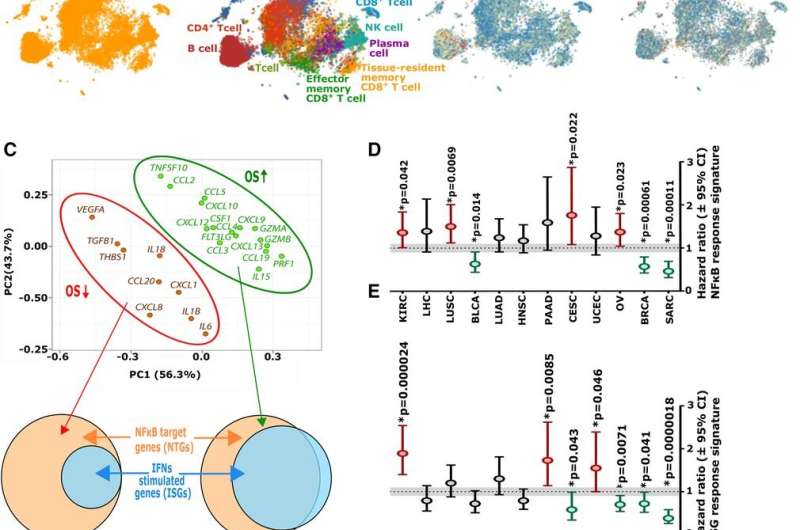Assay for patient-specific monitoring and treatment for ovarian cancer

Around 870 cases of ovarian cancer are reported in Belgium every year. Most of these patients are treated with surgical interventions and/or chemotherapy. Molecule-specific therapy or immunotherapy are some of the latest approaches that have been investigated recently for ovarian cancer treatment, but with no major breakthroughs in overcoming this challenging disease. Now, a new assay developed by Professor Abhishek D. Garg's team, in collaboration with Professor An Coosemans' group, may change this scenario. The so-called sFIS assay, looks at specific immune-biomarkers that are indicative of patient's survival chances and effectiveness of the ovarian cancer treatments. This way, a patient can be monitored in a targeted manner and receive an appropriate specific immunotherapy.
Immunotherapy is a collective term for anticancer treatments that stimulate the patient's own immune system to attack cancer cells and it has recently emerged as a game-changing therapeutic option for prolonging patient survival for various cancer types. However, a range of immunotherapies have been investigated for the treatment of ovarian cancer without the same degree of success, as achieved for other cancers like melanoma or lung cancer. This is due to the highly immune-resistant nature of ovarian cancer cells as well as the high diversity among patients whereby not every treatment works for everyone. Herein, the use of qualitative biomarkers—which classify patients into different categories sothey can receive tailored care and treatment—may hold the key to success.
Qualitative versus quantitative
Most biomarkers are chosen for cancer patient management or decision-making because they are present in large quantities, either in the tumor itself or in the blood. "Nonetheless, this does not necessarily mean that a large amount of a given biomarker indicates the same amount of the associated immunological function or activity," says Professor Garg. "Our team wanted to capture the real rhythms or fluctuations of treatment or survival-relevant pathways, and hence we went in search of personalized, dynamic biomarkers that determine patients' chances of survival." The sFIS assay strategy has beenapplied for the first time with ovarian cancer, but will also be tested in other types of cancer."
The answer is in your own blood
"Based on the results from the assay, we can support doctors in drawing up a monitoring and treatment plan, specific to particular groups of patients," says Ph.D. student Jenny Sprooten. The assay makes use of the serum, the liquid part of your blood that can no longer clot. This is added to the cells in the lab for each patient. "Because every tumor leaves its own 'fingerprint' behind in the serum, the cells will react differently."
Professor Coosemans says, "Based on this, we can estimate the prognosis and advise on the most suitable treatment for that specific patient."
Following the two clinical studies in patients with ovarian cancer already completed in the current research, the first studies for other cancers are already planned at UZ Leuven. The studies will soon be extended for further valorisation and validation of the assay. If everything goes well, it will be possible to use the assay in three to five years.
More information: Jenny Sprooten et al, Peripherally-driven myeloid NFkB and IFN/ISG responses predict malignancy risk, survival, and immunotherapy regime in ovarian cancer, Journal for ImmunoTherapy of Cancer, DOI: 10.1136/jitc-2021-003609. jitc.bmj.com/content/9/11/e003609




















